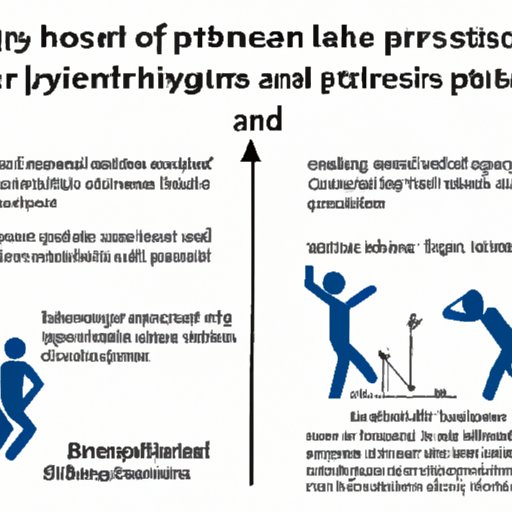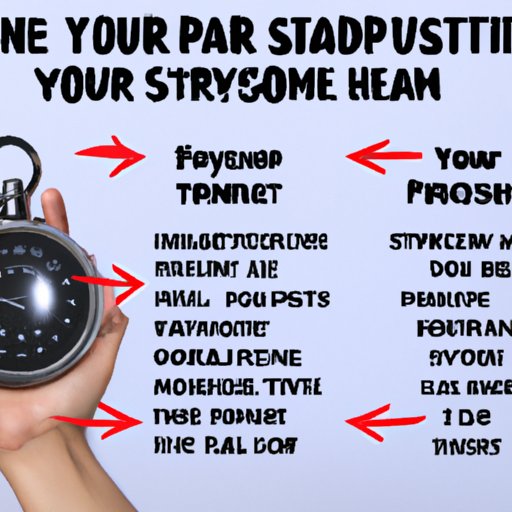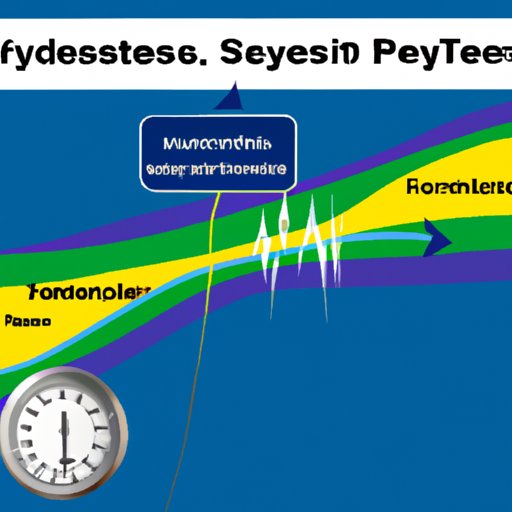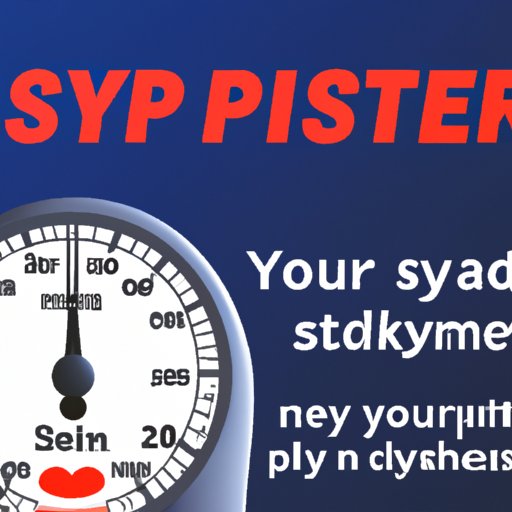Introduction
Systolic pressure is the top number in a blood pressure reading and indicates the force of blood against artery walls when the heart beats. It is an important indicator of overall cardiovascular health and can be affected by many factors, including physical activity. In this article, we will explore why systolic pressure increases during exercise, looking at the physiological reasons behind it and how it can be managed.

Exploring the Physiological Reasons Behind an Increase in Systolic Pressure During Exercise
The primary cause of an increase in systolic pressure during exercise is the increased demand on the heart to pump more blood throughout the body. This is known as cardiac output, which is the amount of blood pumped out of the heart per minute. When the heart is required to work harder, it pumps faster and with greater force. This leads to an increase in systolic pressure.
Physical activity also has an effect on cardiac output. The body responds to physical activity by increasing its metabolic rate and releasing hormones that stimulate the heart to beat faster. As the heart rate increases, so does the cardiac output, resulting in a rise in systolic pressure. Additionally, the contraction of skeletal muscles during exercise can increase the pressure in the arteries, further raising the systolic pressure.
Age is another factor that affects systolic pressure. As we get older, our hearts become less efficient and have to work harder to pump blood throughout the body. As a result, systolic pressure tends to increase with age.

How to Manage Systolic Pressure During Exercise
It is important to manage systolic pressure during exercise to reduce the risk of developing long-term health problems. There are several strategies that can be used to reduce systolic pressure, such as:
- Reducing the intensity of physical activity
- Increasing the duration of exercise sessions
- Incorporating rest periods into exercise routines
- Maintaining a healthy weight
- Eating a balanced diet
In some cases, medications may be prescribed to control systolic pressure. These medications can help to reduce the strain on the heart and keep the systolic pressure within a healthy range.
Examining the Relationship Between Exercise and Systolic Pressure
The intensity of exercise can have a significant impact on systolic pressure. Low-intensity exercises, such as walking or light jogging, can help to keep systolic pressure at a healthy level. However, high-intensity exercises, such as sprinting or heavy weightlifting, can lead to a sharp increase in systolic pressure.
A healthy level of systolic pressure is typically considered to be below 120 mmHg. If the systolic pressure is consistently above this level, it is important to speak to a doctor to determine the best course of action.

The Link Between Exercise Intensity and Systolic Pressure
There are both benefits and risks associated with increasing systolic pressure during exercise. On one hand, increased systolic pressure can improve cardiovascular health and increase metabolism, reducing the risk of heart disease. On the other hand, excessive systolic pressure can put strain on the heart and lead to long-term health complications.
What Are the Health Benefits of Increasing Systolic Pressure During Exercise?
Increasing systolic pressure during exercise can provide a number of health benefits, including:
- Improved cardiovascular health – Increased systolic pressure can help strengthen the heart muscle and improve the efficiency of the cardiovascular system.
- Increased metabolism – Regular exercise can raise the metabolic rate and help the body burn calories more efficiently.
- Reduced risk of heart disease – Regular exercise can help to reduce cholesterol levels and lower the risk of developing heart disease.
Why Does Systolic Pressure Increase With Age?
As we age, our cardiovascular systems undergo changes that can lead to an increase in systolic pressure. These changes include a decrease in the elasticity of the arteries and an increase in stiffness of the heart muscle. Additionally, certain medications and side effects of aging can contribute to an increase in systolic pressure.
Understanding the Role of Diet and Exercise in Regulating Systolic Pressure
Diet and exercise play an important role in regulating systolic pressure. Eating a balanced diet that is low in saturated fats and sodium can help to reduce systolic pressure. Regular exercise, meanwhile, can help to maintain a healthy weight and keep the heart strong. By making simple changes to their lifestyle, people can help to keep their systolic pressure at a healthy level.
Conclusion
In conclusion, systolic pressure increases during exercise due to the increased demand on the heart to pump more blood throughout the body. Age and physical activity can also affect systolic pressure. To manage systolic pressure during exercise, people should focus on maintaining a healthy weight, eating a balanced diet, and engaging in regular exercise. Additionally, understanding the link between exercise intensity and systolic pressure can help people to maximize the health benefits of physical activity while minimizing the risks.
(Note: Is this article not meeting your expectations? Do you have knowledge or insights to share? Unlock new opportunities and expand your reach by joining our authors team. Click Registration to join us and share your expertise with our readers.)
